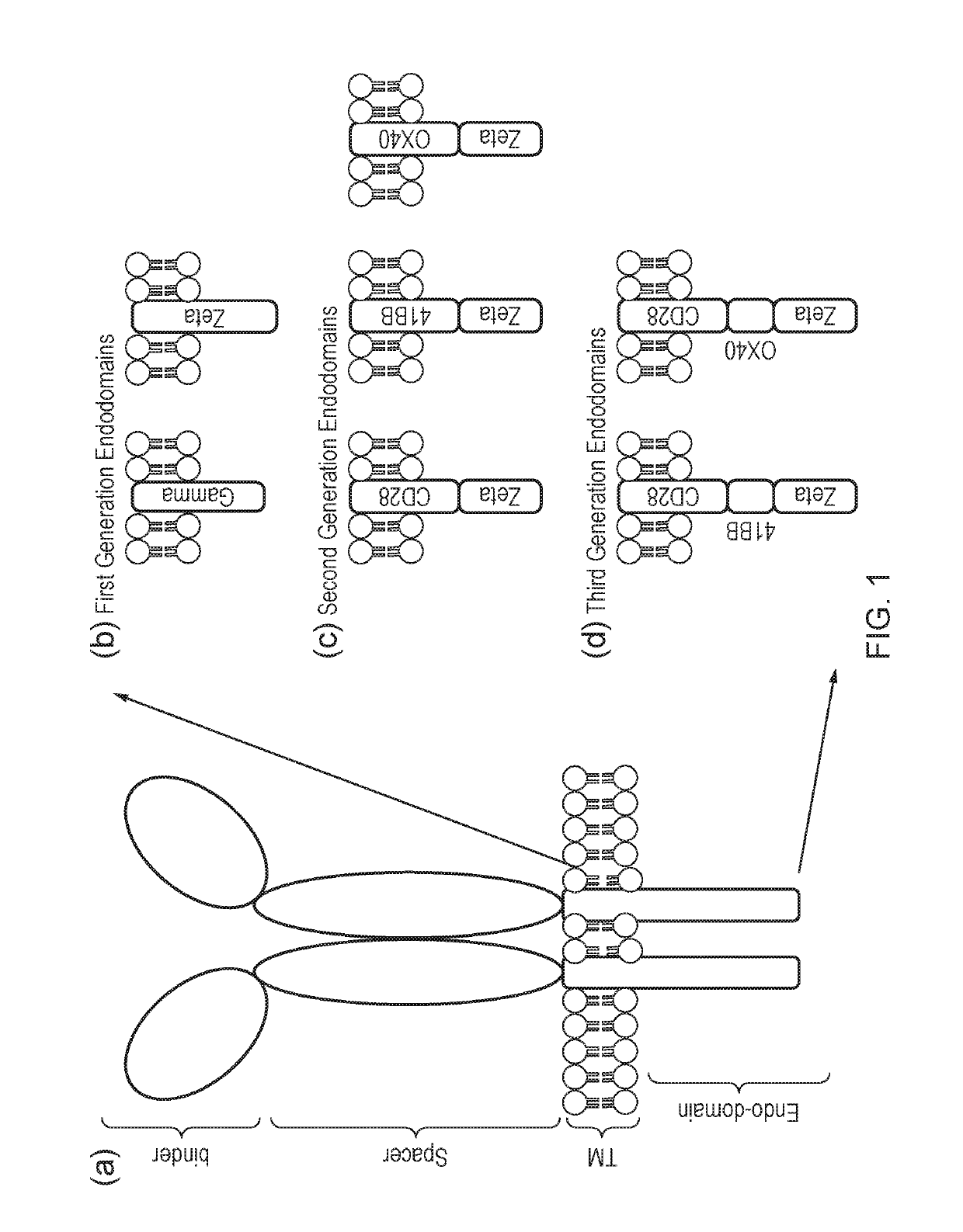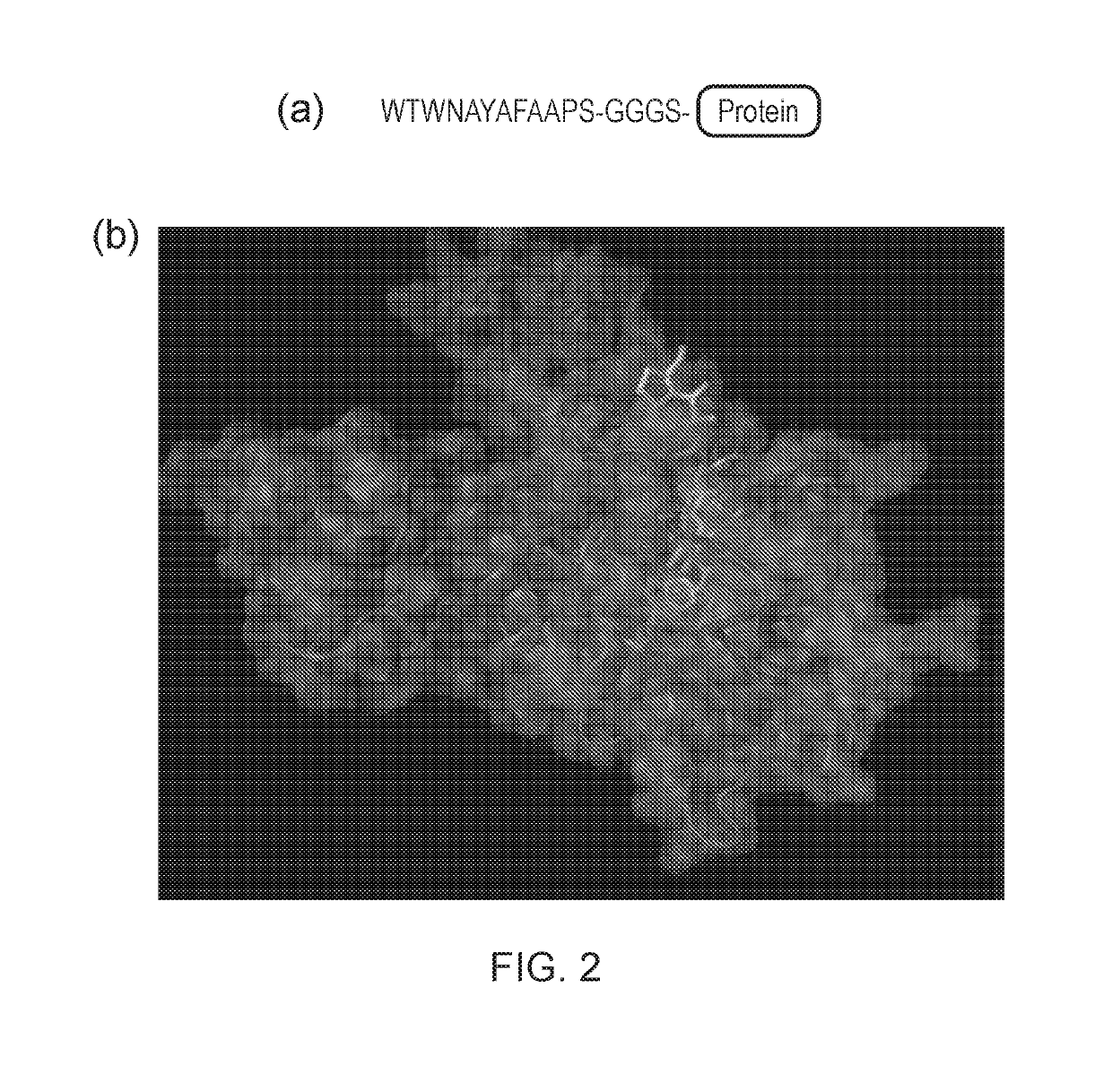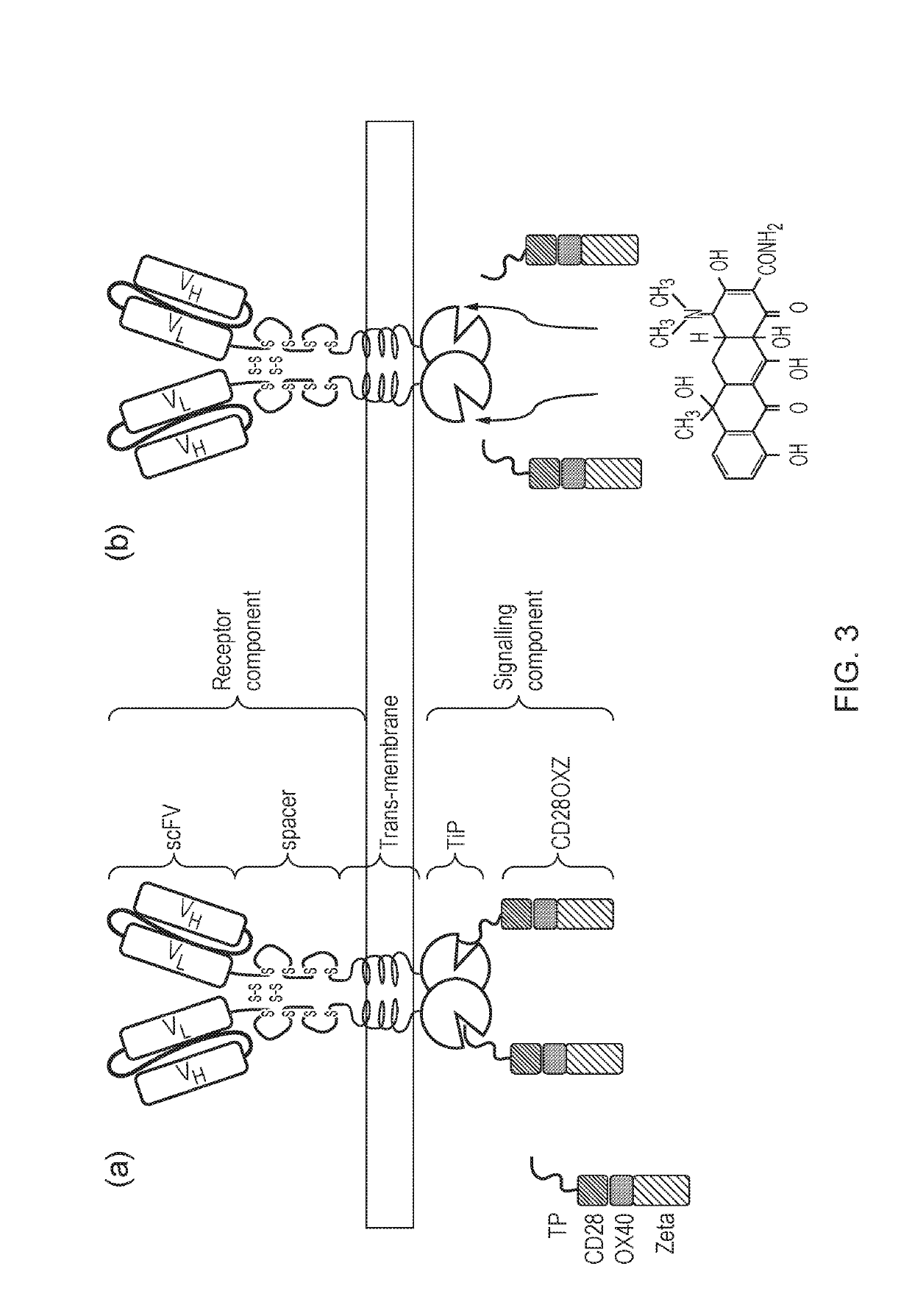Signalling System
a signalling system and chimeric antigen technology, applied in the direction of immunoglobulins, peptides, specific cell targeting fusions, etc., can solve the problems of difficult and quite often impossible to select and expand large numbers of t-cells specific for most cancer antigens, “on-target off-tumour", macrophage activation syndrome (mas), etc., to reduce adverse toxic effects
- Summary
- Abstract
- Description
- Claims
- Application Information
AI Technical Summary
Benefits of technology
Problems solved by technology
Method used
Image
Examples
example 1
lity of the Original TetCAR Signalling System
[0283]A bicistronic construct was expressed as a single transcript which self-cleaves at the 2A site to yield TiP fused to eGFP and a CAR with TetR as its endodomain (FIG. 5a).
[0284]Fluorescent microscopy of SupT1 cells expressing this construct in the absence of tetracycline demonstrated that eGFP fluorescence can clearly be seen at the cell membrane (FIG. 5b); whilst in the presence of tetracycline the eGFP was cytoplasmic (FIG. 5c). These data demonstrate that tetracycline has displaced TiP from the TetR CAR.
example 2
g Through the Original TetCAR System
[0285]A bicistronic construct was expressed in BW5 T cells as a single transcript which self-cleaves at the 2A site to yield a signalling component which comprises TiP fused via a flexible linker to the endodomain of CD3-Zeta; and a receptor component which comprises a CD33 recognizing scFv, a spacer derived from the Fc domain of IgG1, a CD4 derived transmembrane and intracellular domain; and TetR (FIG. 6a). A control was also expressed which was identical except that TiP was absent from the signalling component (FIG. 6b).
[0286]The BW5 T-cells were challenged with wild-type SupT1 cells or SupT1 cells engineered to express CD33 in the absence of tetracycline or in the presence of increasing concentrations of tetracycline. T-cells challenged with wild-type SupT1 cells did not activate in either the presence or absence of Tetracyline; T-cells challenged with SupT1 cells expressing CD33 were activated in the absence of Tetracycline, but activation is ...
example 3
g of the Original TetCAR System in Primary T Cells
[0288]SupT1 cells (which are CD19 negative), were engineered to be CD19 positive giving target negative and positive cell lines which were as similar as possible. Primary human T-cells from 3 donors were transduced with three CAR constructs: (i) “Classical” 1st generation anti-CD19 CAR; (ii) 1st generation anti-CD19 tetCAR; (iii) Control anti-CD19 tetCAR where TiP is missing from endodomain. Non-transduced T-cells and T-cells transduced with the different CAR constructs were challenged 1:1 with either SupT1 cells or SupT1.CD19 cells in the presence of different concentrations of Tetracycline. Supernatant was sampled 48 hours after challenge. Supernatant from background (T-cells alone), and maximum (T-cells stimulated with PMA / lonomycin) was also samples. Interferon-gamma was measured in supernatants by ELISA (FIG. 13). “Classical” CAR T-cells were activated by SupT1.CD19 irrespective of tetracycline. TetCAR T-cell were activated by S...
PUM
| Property | Measurement | Unit |
|---|---|---|
| Nucleic acid sequence | aaaaa | aaaaa |
Abstract
Description
Claims
Application Information
 Login to View More
Login to View More - R&D
- Intellectual Property
- Life Sciences
- Materials
- Tech Scout
- Unparalleled Data Quality
- Higher Quality Content
- 60% Fewer Hallucinations
Browse by: Latest US Patents, China's latest patents, Technical Efficacy Thesaurus, Application Domain, Technology Topic, Popular Technical Reports.
© 2025 PatSnap. All rights reserved.Legal|Privacy policy|Modern Slavery Act Transparency Statement|Sitemap|About US| Contact US: help@patsnap.com



